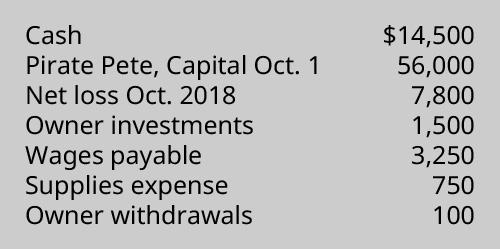Hi Tutor, attached below is two different homework exercise, I have provided some answers to the first one (homework Exercise 1)while I have not provided any on the second one. I won't mind an additio
For this assignment, you will submit this document containing your answers to the below questions to the assignment link within Blackboard. A specific word count is not required, but each question should be answered thoroughly and in a professional manner.
After reading/viewing the materials for this module/week, answer the questions below. The questions will test your knowledge of concepts from Chapters 1 and 2 from the Principles of Accounting, Vol. I text.
Homework Exercise 1 is due by 11:59 p.m. (CT) on Sunday of Module/Week 1.
Chapter 1:
Use the internet to research one manufacturing, one retail (or merchandising), and one service business. For each business, describe the following:
the primary purpose of the entity: Creating a corporate corporation has four benefits: it protects business owners, lowers taxes, gives operations clarity and structure, and presents a professional image to clients and the public.
the types of activities that accountants would record (hint: what is the source of the business’ funding, and what costs might the business have?) Personal investment, angel investors, venture capital, venture capital funds, government grants and subsidies, and bank loans are just a few of the ways a business can raise money. Before looking for further sources of funding, a business owner should be ready to handle some personal investment on their own, according to the adage that if you want anything done correctly, you should do it yourself. Often referred to as "love money," investment obtained through personal connections can be a good source of capital for a company. Another way to raise money for a business is to apply for government grants and subsidies as well as bank loans.
the types of decisions that might be made in this organization and how financial and nonfinancial information might help the decision-making process
Uber and Lyft are two popular ride-sharing services. Imagine that you are visiting New York City for a family vacation. You are trying to decide whether to use one of these ride-sharing services to get around the city or rent a car and drive yourself. Considering the perspectives of the passengers (your family), the drivers, and the company (Uber or Lyft), explain the following:
why ride-sharing services have gained in popularity
the financial considerations relevant to your decision
the nonfinancial considerations relevant to your decision
The Dow Jones Industrial Average (DJIA) is often cited as a key metric for business activity. The average is a mathematical formula that uses the stock prices of thirty companies traded on the New York Stock Exchange (NYSE) and the National Association of Securities Dealers Automated Quotation (NASDAQ) system.
Identify several of the companies that are included in the DJIA.
Explain why this metric might be commonly used to measure business activity.
Research the history of the DJIA and note some interesting facts. When did the Dow begin? What was the first value? What was the lowest value? The following is an example of a website that may be helpful: http://www.dow-jones-djia.com/history-of-dow-jones-industrial-average-index/.
What is the current value of the DJIA? What factors might contribute to the difference between early and current values of the DJIA?
Chapter 2:
Define the term stakeholders. Identify two stakeholder groups and explain how each group might use the information contained in the financial statements.
Stakeholders are people or organizations with an interest in a certain organization's decision or activity.
Name the three types of legal business structure. Describe one advantage and one disadvantage of each.
Compare business structures
| Business structure | Ownership |
| Sole proprietorship Business structure | One person Ownership |
| Partnerships Business structure | Two or more people Ownership |
| Limited liability company (LLC) Business structure | One or more people ownership |
One of the advantages of sole proprietorship is Personal liability, one person is allowed to take the risk.
The disadvantage of sole proprietorship includes raising capital can be challenging.
Advantages of a partnership business includes business is easy to establish and start-up costs are low. more capital is available for the business.
Disadvantage is that Every partner is responsible for paying their fair portion of the partnership's debts in addition to all other debts.
Advantage of a limited liability company is that It shields the company's owners from being held liable for the debts of the business while the disadvantages is that In comparison to a sole proprietorship or general partnership, an LLC typically costs more to establish and manage.
Prepare a statement of owner’s equity using the information provided for Pirate Landing for the month of October 2018.

For the month Ended October 31, 2018
Pirate Pete, Capital Oct. 1 - $56,000
Increase:
Owner Investment: $1,500
Total Increase: 1500
Decrease:
Net loss Oct. 2018 7,800
Owner withdrawals 100
Total decreases 7,900
$56,000 + $1,500-$7900 = $46,000
Explain the purpose of the statement of cash flows and why this statement is needed.
The input and outflow of cash for a business over a specific period are reported in a statement of cashflow. It demonstrates how a company's cash flow is impacted by its operating, investing, and financing activities. The cash flows from operating activities are converted using the statement of cash flow, which is created using the net income from the income statement. By dividing the company transaction into operating, investing, and financing operations, it also demonstrates the source and uses of cash.
Page 5 of 5



